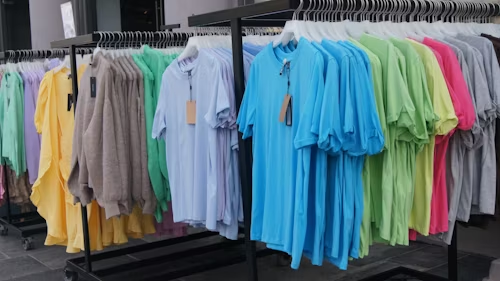Streetwear didn’t just happen, it evolved from underground scenes, countercultures, and creative expressions that made their way into everyday wardrobes. And if there’s one item that perfectly captures this journey, it’s the printed t-shirt. Over decades, this humble garment has transformed from a plain undershirt to a cultural billboard, shaping, and being shaped by, streetwear’s rise. Brands, fans, and even small designers have made their mark by creating custom screen printed t-shirts that spoke to specific communities, movements, or moments in time.
From Utility to Statement: The Early Days
T-shirts were originally utilitarian, a military garment that became casual wear post-WWII. But by the 1960s and 70s, printing technology like plastisol ink made bold graphics possible, and suddenly, shirts could carry slogans, band logos, and political statements. This set the stage for streetwear’s signature mix of fashion and identity.
In many ways, the printed tee became an early form of social media, wearers “posted” their beliefs, tastes, and affiliations across their chests, long before hashtags existed.
The 1980s–90s: Hip-Hop, Skate Culture, and the Birth of Streetwear
Streetwear, as we know it, took shape in the 1980s and 90s, heavily influenced by New York hip-hop crews, California skate culture, and Japanese fashion innovators. Printed t-shirts became the cheapest, most visible way for these communities to represent themselves.
- Hip-Hop Influence – Rappers and their crews wore tees emblazoned with logos, crew names, and album art. Brands like Cross Colours and FUBU emerged, making printed graphics central to their design DNA.
- Skateboard Aesthetics – Skate brands like Santa Cruz and Thrasher popularized tees with bold, rebellious prints.
- Japanese Streetwear – Visionaries like Hiroshi Fujiwara brought a refined twist to printed tees, merging Western graphics with Japanese design sensibility.
The Streetwear Logo Economy
By the 2000s, printed t-shirts had become the centerpiece of a “logo economy” in streetwear. Brands like Supreme, A Bathing Ape (BAPE), and Stüssy thrived on simple tees with iconic graphics or minimal wordmarks, creating scarcity and hype that turned a $30 tee into a collector’s item.
Limited drops and collaborations added to the frenzy. Suddenly, a tee wasn’t just clothing, it was a cultural artifact, a piece of art, and sometimes even an investment.
Printing Techniques That Shaped the Look
The streetwear t-shirt scene wouldn’t be the same without advances in printing.
- Screen Printing – The classic method, offering vibrant colors and durability, is perfect for bold designs.
- Heat Transfer – Allowed smaller runs and intricate designs without high setup costs.
- Direct-to-Garment (DTG) – Makes one-off prints and on-demand drops possible, ideal for micro-brands and limited editions.
Each method influenced how brands experimented with art styles, layering, and color palettes.
Cultural Messaging: More Than Just Style
Streetwear printed tees often carry deeper meaning:
- Political Statements – Protest slogans and social justice messages.
- Cultural Pride – Graphics celebrating heritage, language, or local landmarks.
- Art Collaborations – Partnerships with graffiti artists, photographers, and illustrators.
Wearing a printed tee became a subtle (or not-so-subtle) way to align with a movement or express personal identity.
Actionable Insights for Modern Streetwear Brands
If you’re building a streetwear brand today, printed t-shirts are still the fastest, most effective entry point into the market. Here’s why, and how to make them work for you:
- Start with a Clear Brand Identity
Your prints should reflect your brand’s story. Are you about urban minimalism, vintage sportswear, or cultural commentary? Make sure every tee reinforces that narrative. - Leverage Scarcity and Exclusivity
Limited runs, numbered editions, and time-bound drops increase desirability. Supreme’s “drop model” has proven this repeatedly. - Collaborate with Artists and Influencers
Artist collabs not only bring fresh designs but also new audiences. Streetwear thrives on cultural cross-pollination. - Balance Quality and Affordability
Streetwear buyers expect durable prints and comfortable fabrics. A well-made tee becomes a repeat purchase driver. - Tell the Story Behind the Print
Use social media and product descriptions to share the inspiration and process behind your designs, which builds an emotional connection.
The Data: Why Printed Tees Still Dominate
According to Statista, the global custom t-shirt printing market is projected to reach over $3.1 billion by 2025, driven largely by youth culture, streetwear trends, and e-commerce accessibility. Platforms like Etsy and Shopify have lowered entry barriers, while Instagram and TikTok provide built-in marketing channels.
This means new brands can launch, grow, and reach global audiences without traditional retail infrastructure, keeping the printed t-shirt at the center of streetwear innovation.
Streetwear’s Ever-Evolving Canvas
From underground skateparks to high-fashion runways, the printed t-shirt remains the beating heart of streetwear. It’s adaptable, democratic, and endlessly expressive. Whether mass-produced by global brands or hand-pulled in a garage studio, these shirts carry the energy of the streets into everyday life.
And in a fashion landscape where authenticity rules, a good printed tee is still one of the most powerful tools a brand, or a subculture, can wield.

